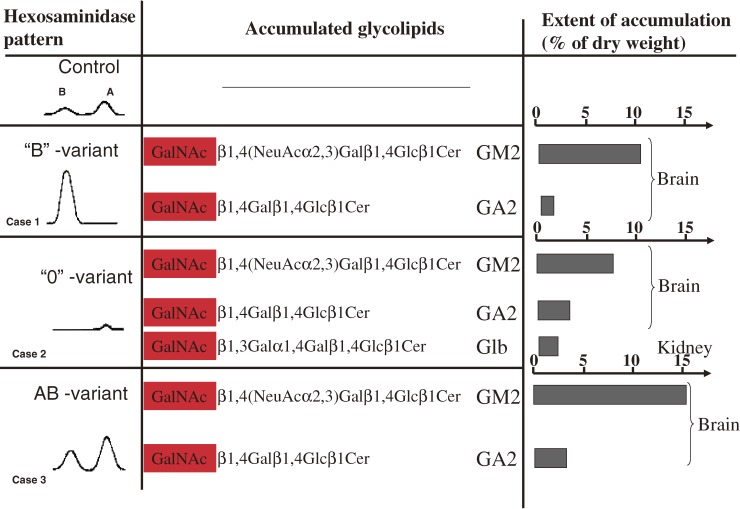Figure 1.
Biochemical analysis of brains with infantile amaurotic idiocy. Lipid and hexosaminidase analysis in the brain tissue of the three first cases revealed puzzling results in 1967 and spring of 1968 (summarized in: ref. 249).
- The tissue of case 1 with TSD (called “B”-variant) was deficient in HexA activity and had increased HexB activity, a finding which was confirmed in 1968 by an additional case250) and the observation by Okada and O’Brian.251)
- Brain and visceral organs of case 2 –characterized by the additional storage of globoside (Glb) in visceral tissues– was completely deficient in both major hexosaminidases, A and B, and was left with a minor activity of HexS.26,250,252,253) This one we named “0”-variant of GM2-gangliosidosis and it was later called Sandhoff disease.
- Apparently contradicting the above findings, the brain tissue of case 3 contained both, HexA and HexB activity, even at elevated levels despite a huge accumulation of GM2 and GA2 (later called AB-variant after the defect of a cofactor –GM2AP– was discovered, see below).

